“Private, why on earth would you volunteer to jump out of a perfectly serviceable aeroplane?”
Classic paratrooper joke.
“Sir, when the Air Force invents a perfectly serviceable aeroplane, I’ll let you know!”
The Second World War saw a vast number of technological advances and inventions which still remain relevant in military use to this day. One of these is the concept of airborne troops – quite literally men who jump out of aircraft into combat! The vast majority of belligerent nations utilised airborne units to some extent (and to significantly varying degrees of success!), but the British were actually relatively late to the party, especially considering their status as one of the early pioneers of military air power. Initially born from the then-new Commando formations in 1940, and having been inspired in part by the early successes of the German Fallschirmjäger during the opening stages of the war, with a training school established at RAF Ringway (now Manchester Airport), the British airborne project began to gather momentum. Initially drawn from volunteers (with no more than ten men from any one unit allowed to join at a time), later in the war entire battalions were converted en masse to the Airborne role, with two full divisions in service by the spring of 1945. In addition to the Parachute units, glider-borne airlanding troops were formed – these were trained and equipped in much the same way, and we treat them as more or less identical in Bolt Action. Similarly, Polish soldiers in exile formed their own Airborne units, and fought bravely alongside their British counterparts – make use of the British rules for these, and they’ll do any commander proud!
With their earliest operations being commando-style raids, British Airborne forces also saw action in the invasion of Sicily, meeting with mixed success but proving the validity of the paratrooper concept. In 1944, however, they cemented their place in history with a pair of operations – one a decisive victory, the other a valiantly fought but bitter defeat. In the early hours of June 6 1944, men of the Oxford and Buckinghamshire Light Infantry’s D Company, 2nd (Airborne) Battalion, conducted a glider-borne assault on the vital bridges across the River Orne and Caen Canal (the assault of Bénouville swing bridge is the subject of our jam-packed Bolt Action battle-set; Pegasus Bridge), aiming to capture them intact to allow for British forces to move east from Sword Beach later on D-Day. This was achieved, and reinforcements from the 7th Parachute Battalion were airdropped in; following significant fighting the airborne soldiers were able to hold the bridges and link up with British forces advancing off the beaches. Elsewhere on D-Day, an understrength force from the 9th Parachute Battalion launched a daring attack on the guns of the Merville Battery. Although not fully successful, they did manage to temporarily silence the position, albeit at a significant cost to themselves.
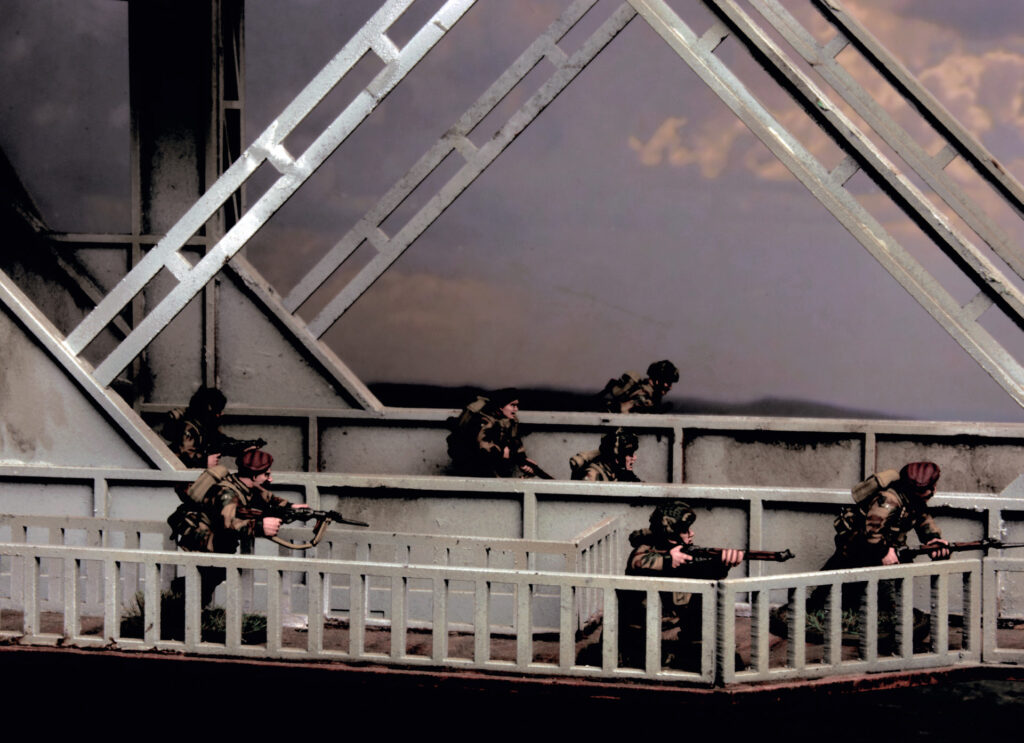
With the successes of the Airborne on D-Day, a much more ambitious operation was conceived to seize vital bridges in the Netherlands, allowing the Allies to bypass much of the German defences and bring the war to a swifter conclusion. This, of course, was Operation Market Garden, since made famous by the classic film A Bridge Too Far. Much has been written about the battles in and around Arnhem, (some of which can be found in Campaign Market Garden along with scenarios and guidance to replicate those famous battles using Bolt Action), but suffice it to say that the British and Polish Airborne forces elevated themselves to truly legendary status in the eyes of both friend and foe. After the failure of Market Garden, British Airborne troops would eventually achieve their goal of crossing the Rhine during Operations Varsity and Plunder, but on those occasions, support was much closer on hand!
The Red Devils in Bolt Action
The British Airborne are one of the most iconic fighting forces of the Second World War, as such, they are heavily represented on wargaming tables the world over. From a painting perspective, this is great, as their trademark red berets and camouflaged Denison-pattern jump smocks make for a great-looking force, and contrast nicely with the battledress-clad uniformity of more ‘standard’ British forces. As befits an elite fighting force, they tend to be festooned with all manner of extra gear, and were historically issued a far greater proportion of automatic weapons than their regular counterparts – great for all those Sten and Bren lovers out there! Our plastic boxed set is the ideal starting point for an airborne force, but the full metal range is really something to behold – no matter the task, there’s a Para on hand to do it! With such a complete range, and such illustrious history, the British Airborne must be hard as nails on the Bolt Action tabletop… right?
Right! No fakeout here, Airborne troops are arguably some of the very best available to later-war British players (losing out in terms of raw scariness to the Gurkhas, and not much else, which isn’t bad going!). Initially appearing in Armies of Great Britain as a single entry, boasting the classic stat line of Stubborn Veterans with the option to take plenty of SMGs, they have since been heavily expanded upon in subsequent campaign and theatre books, and there are now a fair few options for running unique and specialised Airborne units to suit most playstyles! When used straight out of Armies of…, Paratroop Sections can provide a hard core of Veteran infantry to theme an army around, or serve as a special-duties unit focussed on close-quarter fighting, particularly if laden with SMGs – exactly the kind of work that made the Airborne so famous historically!
Campaign D-Day: Overlord brings brand-new ways to play an Airborne force, as well as a number of new special units, particularly for the 6th Airborne and the assault on the Merville Battery – both the forces that were planned for use and the ad-hoc party that ended up carrying out the attack in reality. The Merville selectors are really designed for scenario play, as some of the units are concerningly deadly (particularly the Parachute Distraction Section, toting multiple LMGs and PIATs, firing wildly in all directions with the Split Fire rule!), but the 6th Airborne Reinforced Platoon is a cracking selector for really getting the feel of these elite, fast-moving forces. Placing heavy restrictions on vehicles (only jeeps allowed!) and artillery, it nevertheless grants access to the excellent new Pathfinder sections (perfect for playing an outflanking strategy, at which Veteran infantry excel) and Airborne Royal Engineers bring plenty of flamethrowers to the party for the more competitive types.
As befits their most famous operation, Campaign: Market Garden is packed to the gills with Airborne goodness, allowing you to play both parachute and airlanding (glider-borne) forces, and even the men who flew them to battle, the Glider Pilot Regiment! As with all such armies, the key ‘beats’ are hit to make them feel properly ‘Para’ – plenty of tough, Veteran infantry, without much in the way of heavy support, but plenty of units capable of dishing out the damage to other infantry. I’ve always found British Airborne forces to reward a particularly aggressive playstyle (I took them to the last Bolt Action GT in the pre-Covid era), and as such Blood-Curdling Charge is a great National Characteristic to choose when fielding them. When played aggressively, Paras can be a real handful to deal with on the table, particularly once they’ve managed to get up close and personal!
We’re almost over the D.Z…. Green light on, GO! GO! GO!
Essential Miniatures
Essential Reading
Pegasus Bridge Battle-Set
Other articles in the Forces of Fame Series:
Bolt Action – The Tiger I; Princess Elizabeth (Jubilee Special); Japanese Special Naval Landing Force; M18 Hellcat; Centurion Mk III;
Blood Red Skies – Messerschmitt Bf 110; Ki-43 II ‘Oscar’; Grumman F9F Panther;
Victory at Sea – The Bismarck; Fletcher-Class Destroyers; Kongō;
Pike & Shotte – Cuirassiers; Polish Winged Hussars;
Black Powder (& Epic Battles) – The Iron Brigade; 95th Rifles;
Black Seas – HMS Victory;
Hail Caesar / SPQR – Dacian Falxmen; Hoplites;
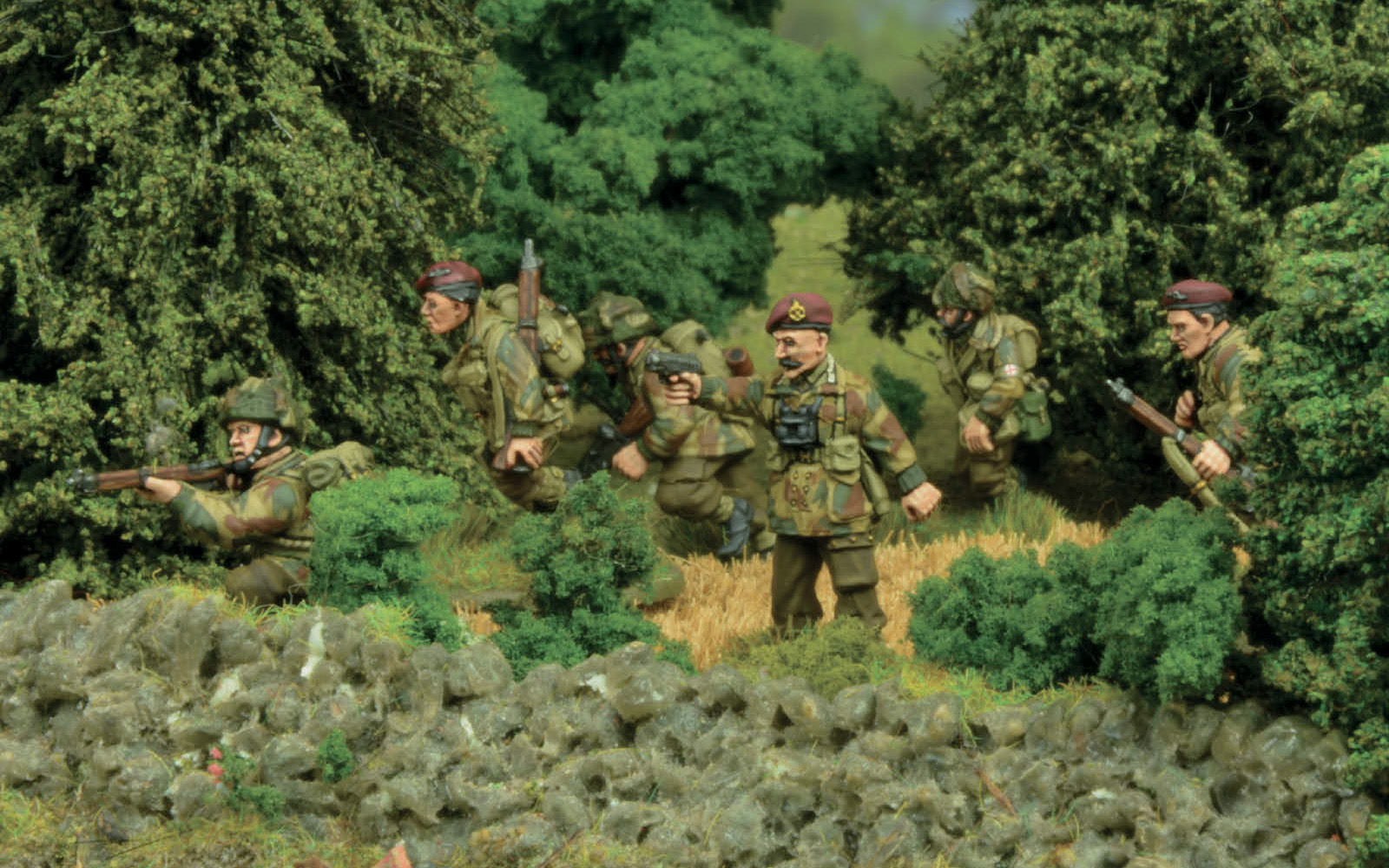
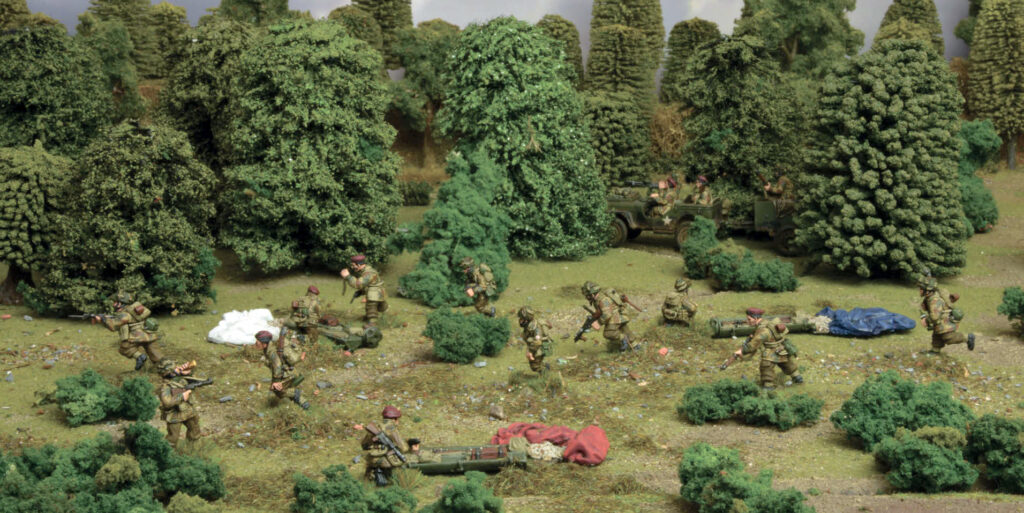
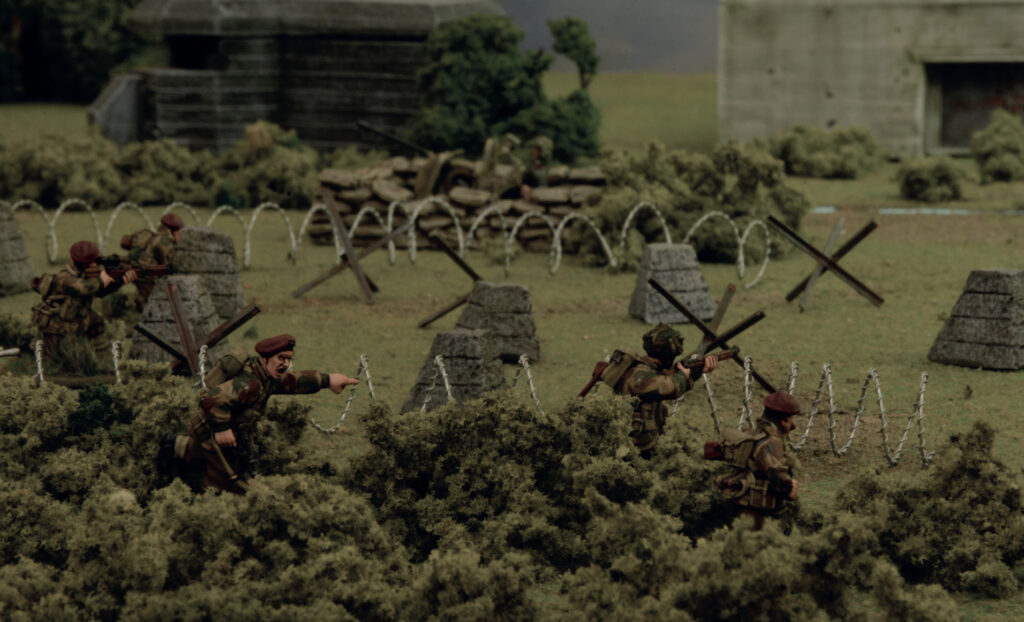
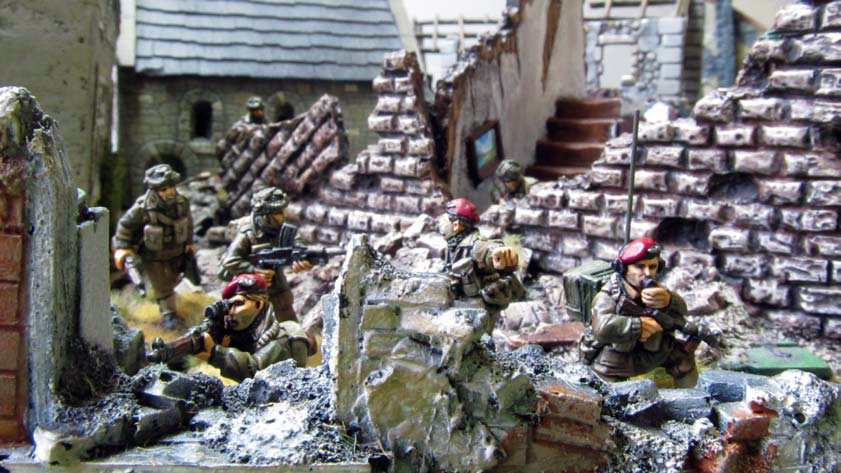
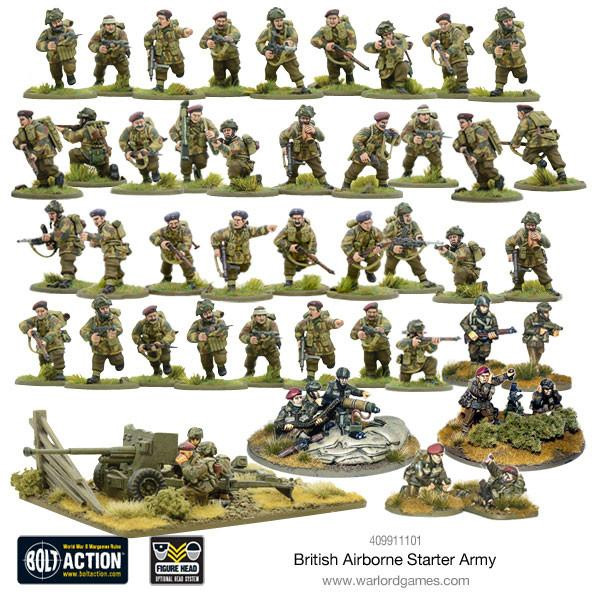
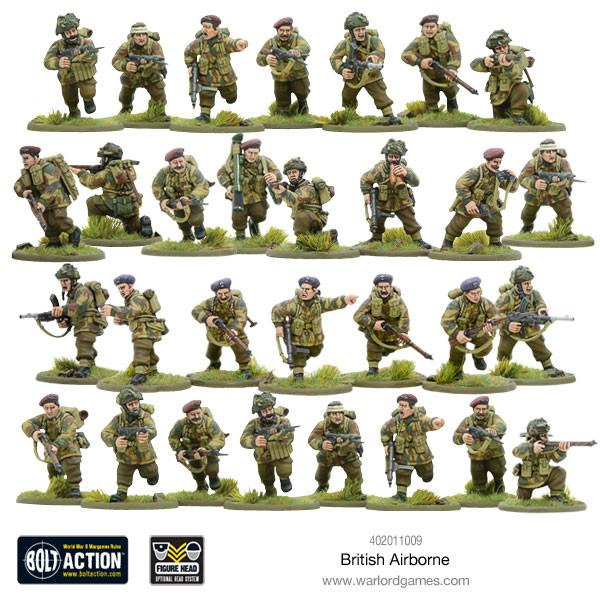
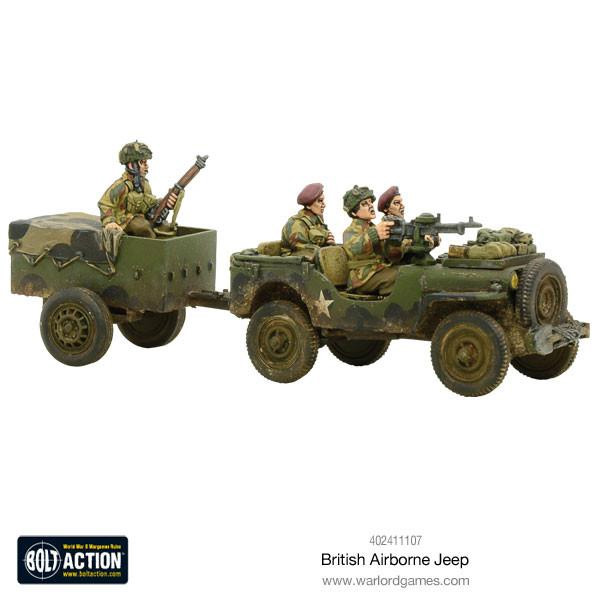
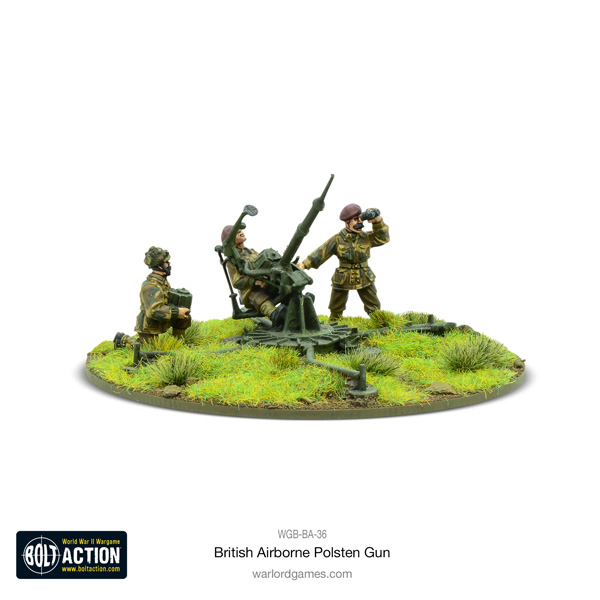
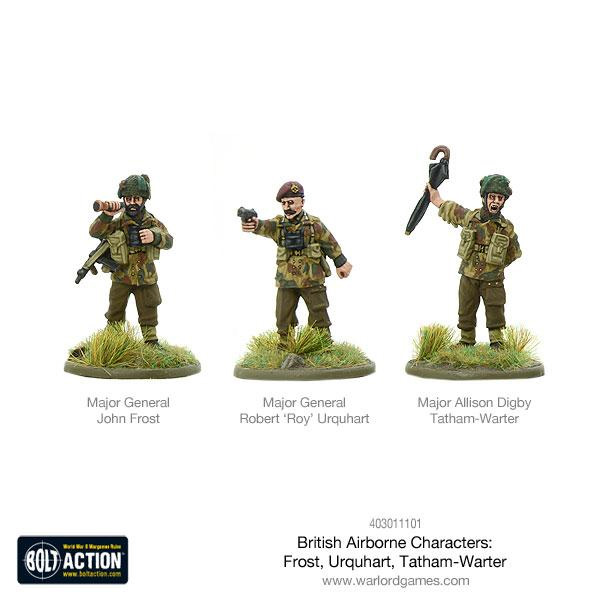
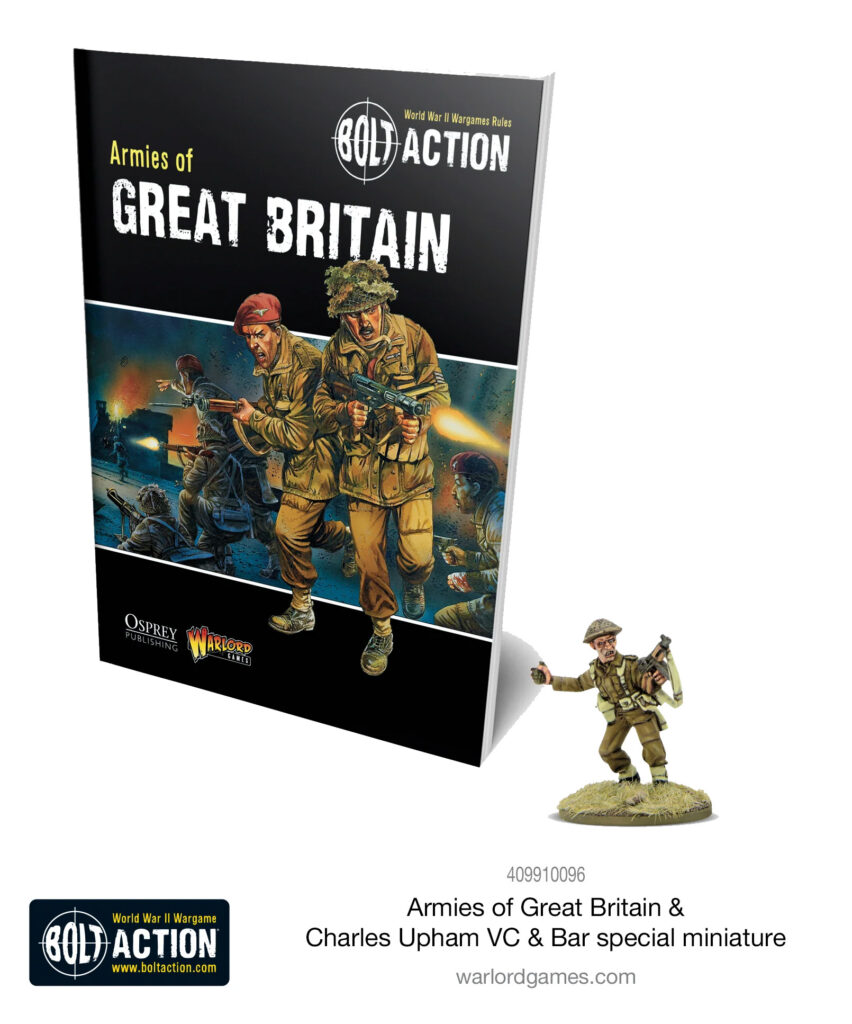
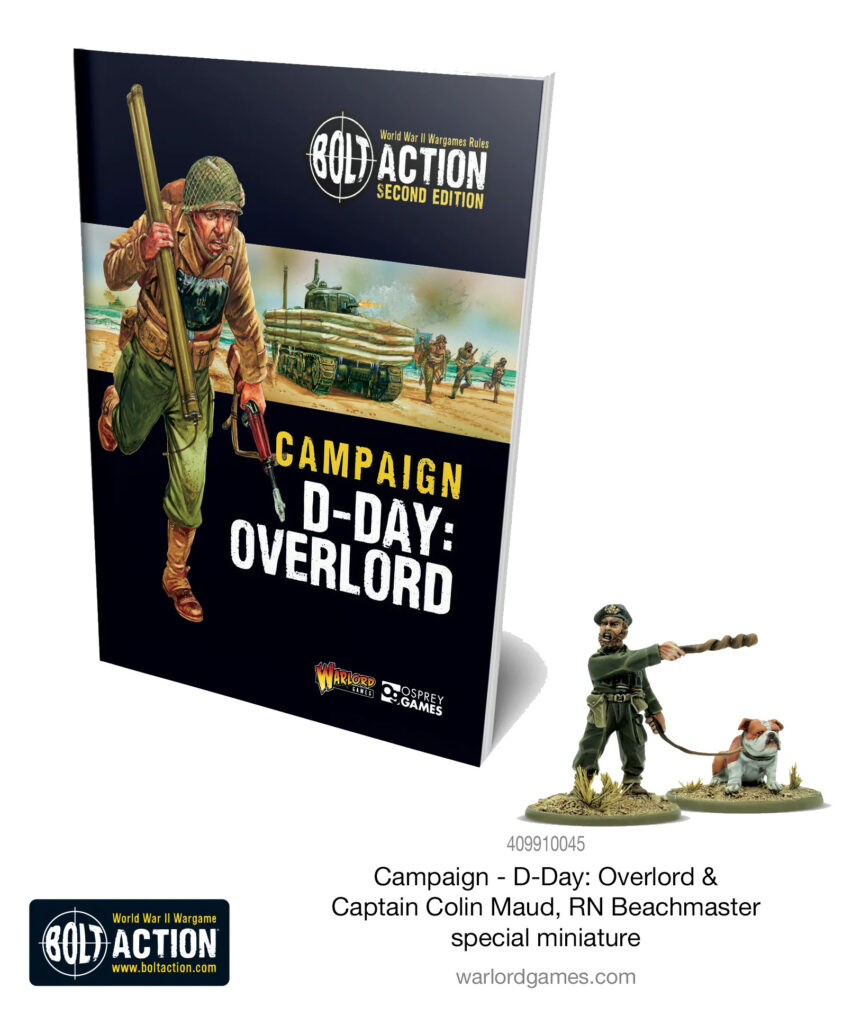

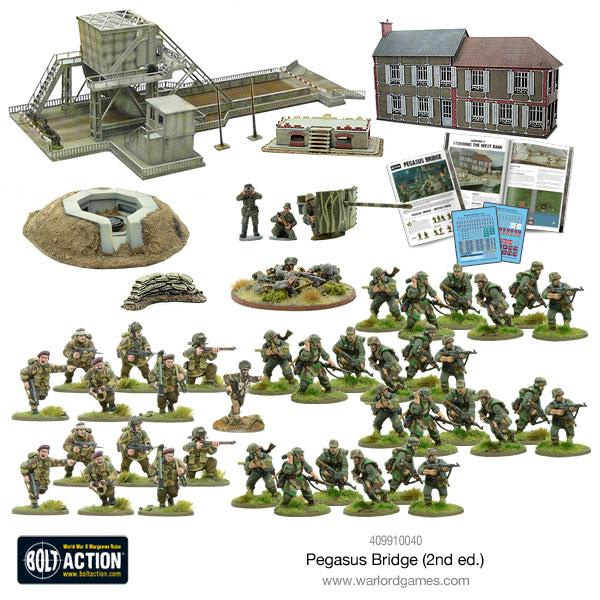
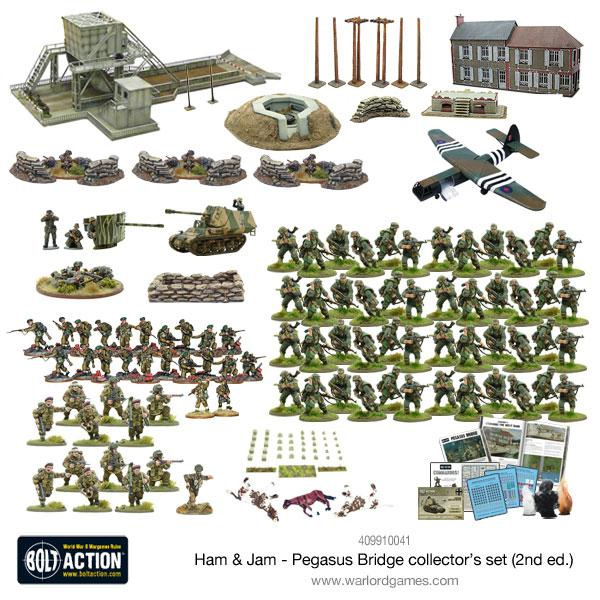
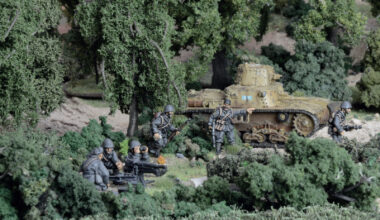
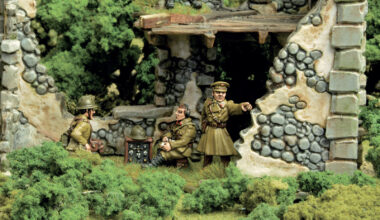
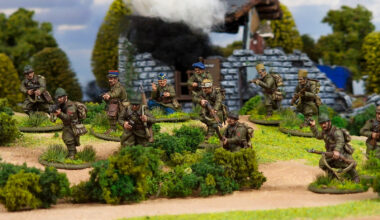
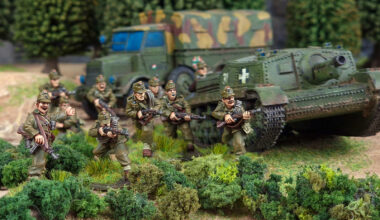
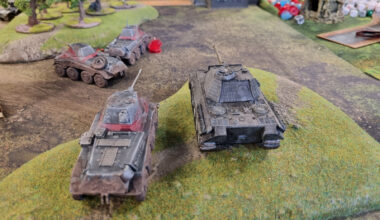
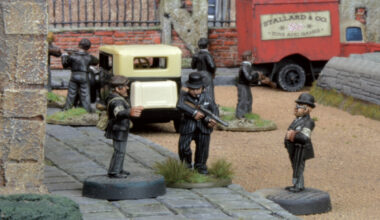
5 comments
Great article! I just wanted to mention that Canada also formed Airborne units beginning in 1942. 1st Canadian Parachute Battalion served as part of the 6th British Airborne Division 1943-1945. Canada also provided 6th Airbone Division with half of the personnel in 2nd Forward Observation Unit and with the 1st Canadian Centaur Battery. In addition, Canadians served in 3rd Forward Observation Unit with 2nd British Independent Parachute Brigade 1944-45. Rules for Canadian paras can be found in Campaign D-Day: British and Canadian Sectors. The Warlord British paras range of miniatures also work really well to represent the Canadians.
2nd Canadian Parachute Battalion was part of the joint Canada/US First Special Service Force, the famous “Devil’s Brigade” 1942-1944. Rules for the First Special Service Force can be found in Campaign Italy: Soft Underbelly. Warlord’s US para miniatures work really well for representing Canadians in the Devil’s Brigade.
Maybe link this to Canadian Army as well?
That is a great suggestion!
“we’re paratroopers sir, we are meant to be surrounded”
That one line is why my whole army is based on paratroopers….. well, maybe also because British Market Garden paratroopers get 3 machine gun jeeps and 2 mortars…. But they just look so cool.
Just a thought, it seems interesting that British paratroopers get a free forward artillery observer because of national rules, even though paratrooper units didn’t have very much support…….
Comments are closed.